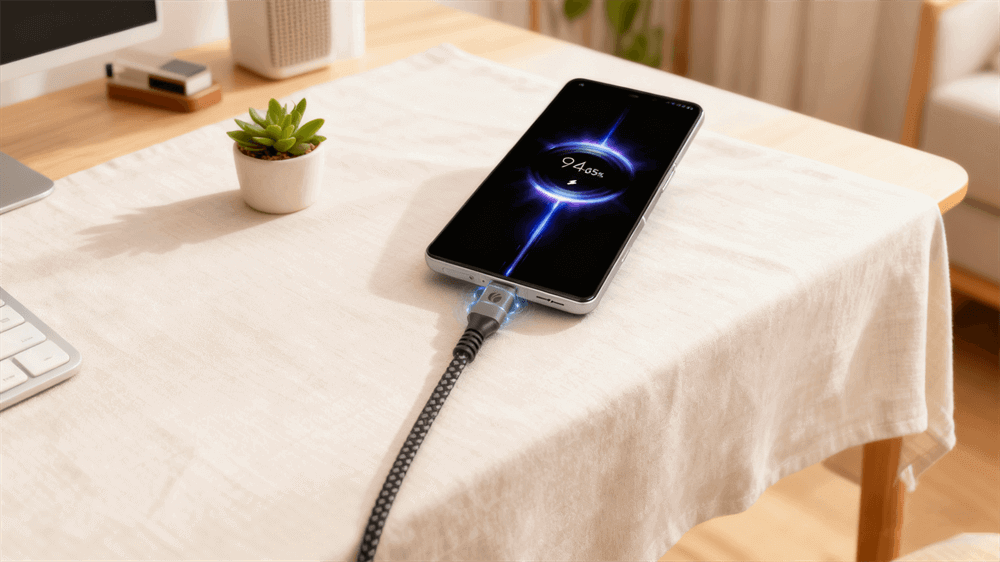In an era where smartphones power everything from communication to navigation, maintaining battery health is crucial for uninterrupted performance. Charging a phone might seem straightforward, but subtle nuances in habits can dramatically influence longevity and efficiency. This article gives you tips for charging phones and optimizing.

Understanding Lithium-Ion Batteries
Modern smartphones predominantly use lithium-ion (Li-ion) batteries, which offer high energy density but are sensitive to certain conditions. These batteries function by moving lithium ions between electrodes during charge and discharge cycles. Over time, factors like heat, voltage extremes, and cycle count lead to capacity loss—typically around 20% after 500 full cycles under ideal conditions.
Key degradation mechanisms include:
Solid Electrolyte Interphase (SEI) Layer Growth: Occurs at high voltages, reducing available lithium.
Electrode Cracking: From repeated expansion and contraction during full charges.
Thermal Runaway: Extreme heat can cause irreversible damage or safety issues.
To counteract these, charging strategies focus on minimizing stress. For instance, avoiding charging temperatures above 35°C (95°F) helps preserve electrode integrity.
Best Practices for Daily Charging
Effective charging begins with consistent, mindful routines. Here are detailed recommendations:
Maintain Optimal Charge Levels: Aim to keep the battery between 20% and 80% for routine use. This range avoids the high-stress zones of near-empty or full capacity. Partial charges, such as topping up from 50% to 80%, are particularly beneficial, as they reduce cycle depth and extend overall battery health. Many devices now include software limits, like Apple's Optimized Battery Charging or Samsung's Protect Battery feature, which automatically cap at 80-85%.
Charge in Short Bursts: Instead of waiting for low battery warnings, perform frequent, short charges throughout the day. This approach aligns with Li-ion chemistry, where shallow cycles cause less wear than deep ones. For example, charging during commutes or breaks keeps levels stable without overtaxing the battery.
Monitor Environmental Factors: Charge in cool, dry environments to prevent overheating. Elevated temperatures accelerate chemical reactions, leading to faster degradation. If the phone feels warm, pause charging or remove protective cases to improve airflow.
Charge Level Recommendation | Benefits | Potential Drawbacks |
20-80% | Minimizes stress, extends lifespan | Requires more frequent charging |
30-85% | Balances convenience and health | Slightly higher voltage exposure |
50-100% (occasional) | Quick full power for emergencies | Increases SEI growth over time |
Selecting the Right Charger and Cable
The choice of charging accessories directly impacts speed, safety, and battery longevity. Official chargers from manufacturers like Apple or Samsung provide calibrated power delivery, but third-party options can be equally effective if certified.
For cables, durability and compatibility are paramount. VCOM charging cables stand out for their robust construction, supporting high-wattage fast charging up to 240W, 40Gbps data transfer, and compatibility with USB4 and Thunderbolt standards. These cables feature E-Marker chips for stable power negotiation, nylon braiding for longevity, and options like right-angle designs for ergonomic use.
Whether for iPhones requiring PD (Power Delivery) or Android devices, VCOM's lineup ensures safe, rapid charging without compromising battery health.
Suggestions when selecting a cable:
Verify USB-IF certification to avoid substandard products.
Match wattage: iPhones benefit from at least 20W adapters, while some Androids support up to 65W.
Consider car chargers for on-the-go needs, opting for those with multiple ports for versatility.
Common Charging Mistakes and How to Avoid Them
Several prevalent errors accelerate battery wear:
Overnight Charging: Leaving devices plugged in all night often leads to prolonged 100% states, causing unnecessary stress. Use timers or smart plugs to disconnect after reaching 80%.
Using Incompatible Chargers: Cheap, uncertified adapters can deliver inconsistent voltage, risking damage. Always check for MFi (Made for iPhone) or equivalent certifications.
Wireless Charging Pitfalls: While convenient, wireless pads generate more heat than wired options. Limit use to low-power scenarios and ensure proper alignment to maximize efficiency.
Ignoring Battery-Intensive Apps: Background processes drain power faster; close unnecessary apps before charging to focus energy on replenishment.
Advanced Tips for Power Users
For those with demanding usage:
Fast Charging Wisely: Technologies like Qualcomm Quick Charge or USB-PD enable rapid replenishment but generate heat. Reserve for necessities and pair with high-quality cables to ensure stability.
Software Optimizations: Enable battery saver modes, which throttle performance to conserve power. On Android, adaptive charging learns habits to optimize cycles; iOS offers Low Power Mode for similar benefits.
Magnetic and Specialized Cables: For convenience, consider magnetic options from brands like VCOM(CU507 Model), which provide quick connections and durability, ideal for frequent users.
Car and Travel Charging: Upgrade to high-output car chargers for efficient road use, ensuring they support the device's protocol.
Tag:Charging,Cable




